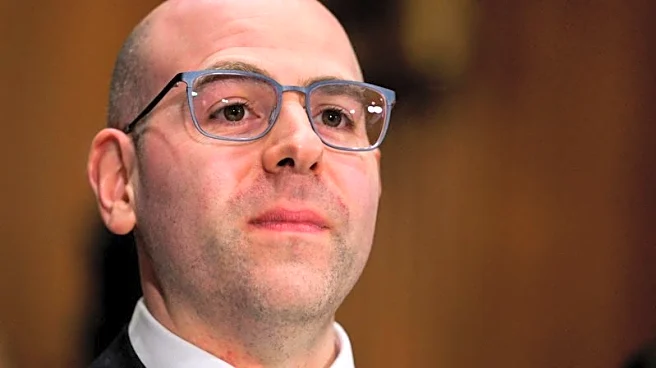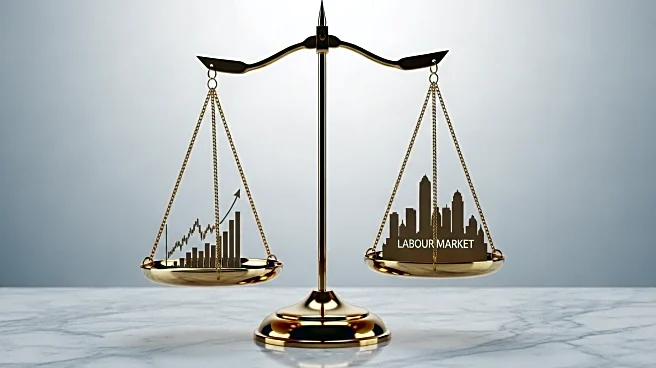What's Happening?
The Federal Reserve's approach to interest rates is causing significant discussion within the financial services industry, particularly among insurers. The ongoing debate between President Trump and Federal Reserve Chairman Jerome Powell has led to uncertainty regarding future rate changes. As of early September, the Fed maintained rates at 4.25% to 4.50%, unchanged since December 2024. This rate influences borrowing costs, consumer spending, investment, and inflation, with global repercussions due to the dollar's dominance. Powell's recent comments suggest a potential shift in policy, considering the stability of unemployment and labor market measures. Insurers are particularly affected by interest rate changes, as they impact investment income and product pricing. Rising rates can lead to higher yields and stronger investment income, while lower rates squeeze profitability, forcing insurers to seek alternative investment strategies.
Why It's Important?
Interest rate changes have profound implications for the insurance industry, affecting both profitability and product offerings. Insurers rely heavily on bond investments, and rate fluctuations can alter their investment strategies and financial outcomes. Higher rates improve yields, benefiting insurers' investment income, while lower rates can compress spreads, challenging profitability. This environment has led insurers to innovate with indexed products and hedge risks through reinsurance deals. Additionally, rate changes influence policyholder behavior, with declining rates encouraging retention of high-crediting policies, increasing liabilities for insurers. The broader economic climate, including employment, inflation, and tariff impacts, further complicates the landscape, with recession risks looming. Analysts anticipate potential rate cuts, which could further affect insurers' strategies and the overall economy.
What's Next?
The Federal Reserve's upcoming decisions on interest rates will be closely watched by insurers and other stakeholders. Any changes could prompt insurers to adjust their investment strategies and product offerings. Companies may need to react swiftly to maintain profitability and meet policyholder expectations. The potential for a second rate cut in December is anticipated by analysts, which could further influence the insurance market and broader economic conditions. Insurers will likely continue to innovate and seek partnerships to navigate the evolving interest rate environment. The ongoing debate between President Trump and Chairman Powell may also impact future policy decisions, adding to the uncertainty faced by the industry.
Beyond the Headlines
The interest rate debate highlights the complex interplay between economic policy and industry-specific challenges. Insurers must balance investment strategies with product guarantees, navigating a landscape shaped by global economic forces and domestic policy decisions. The ethical and strategic considerations of managing policyholder expectations amid fluctuating rates underscore the industry's need for adaptability and foresight. Long-term shifts in investment strategies and product innovation may redefine the insurance market, influencing consumer choices and competitive dynamics. The broader implications of interest rate changes extend beyond immediate financial outcomes, affecting societal and economic stability.











